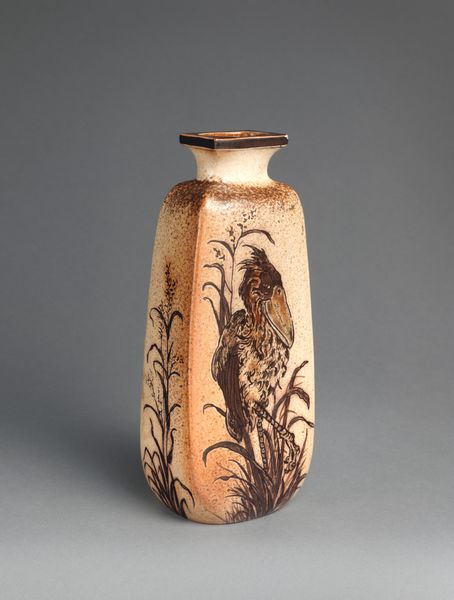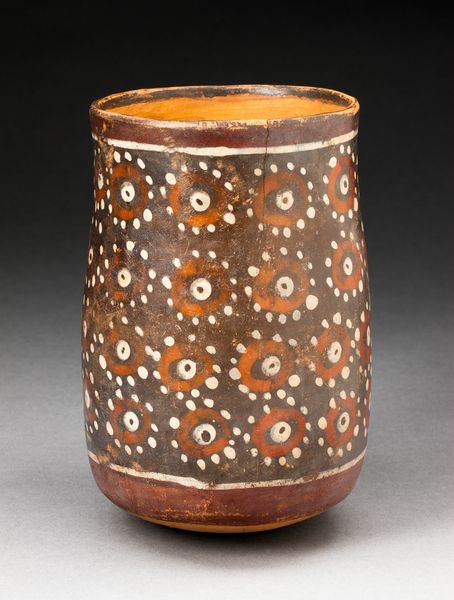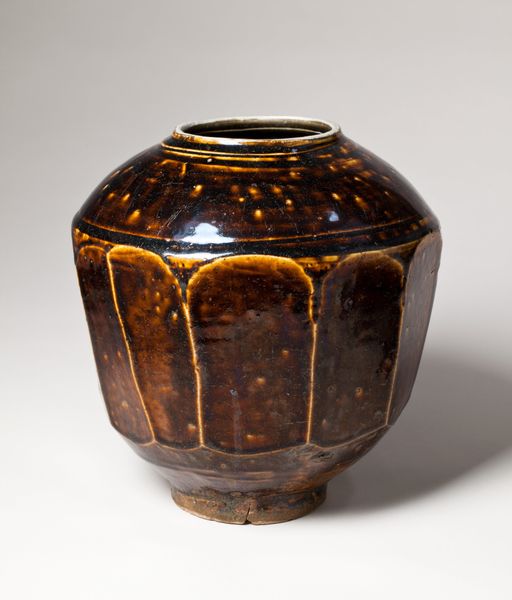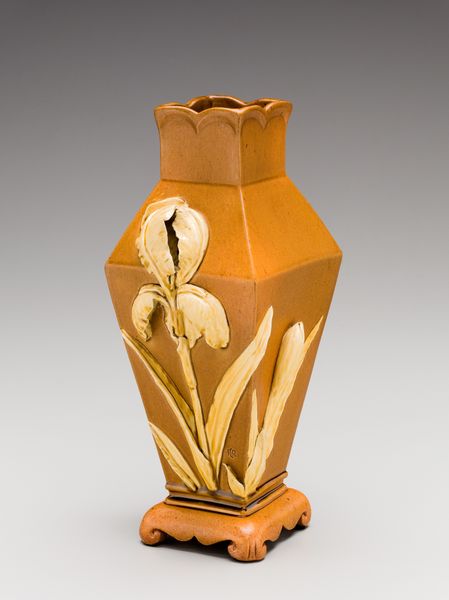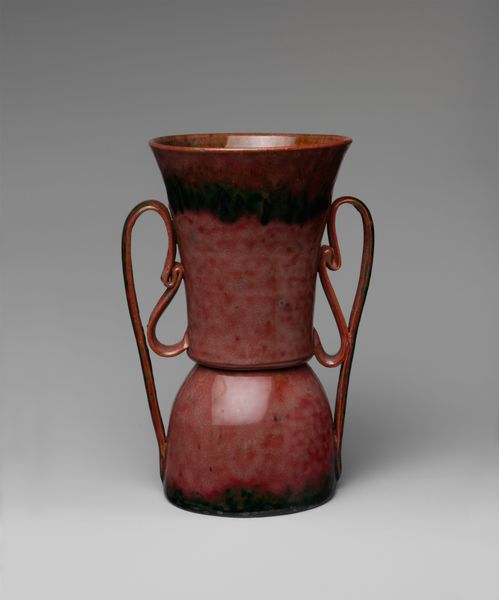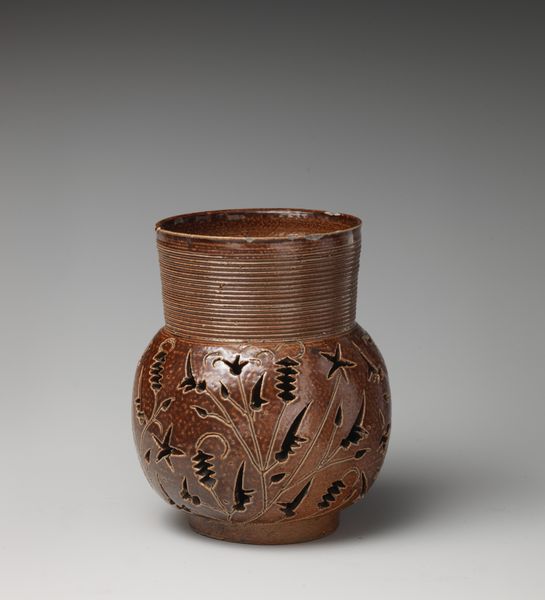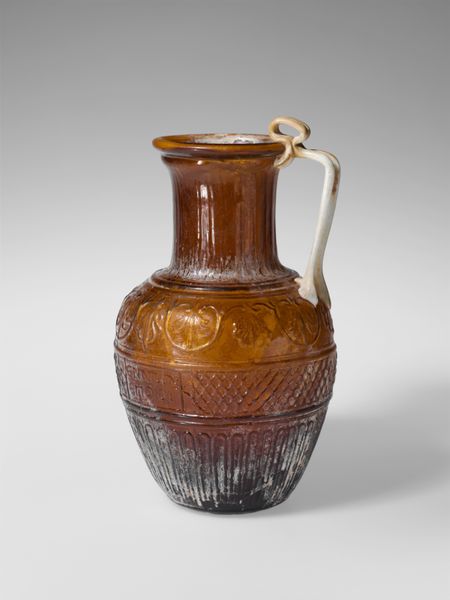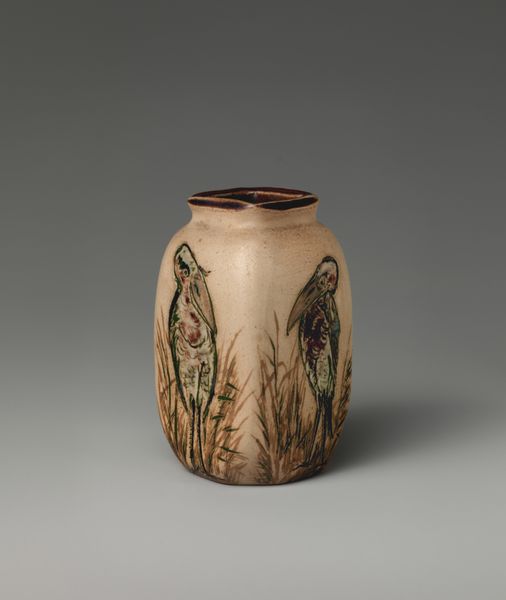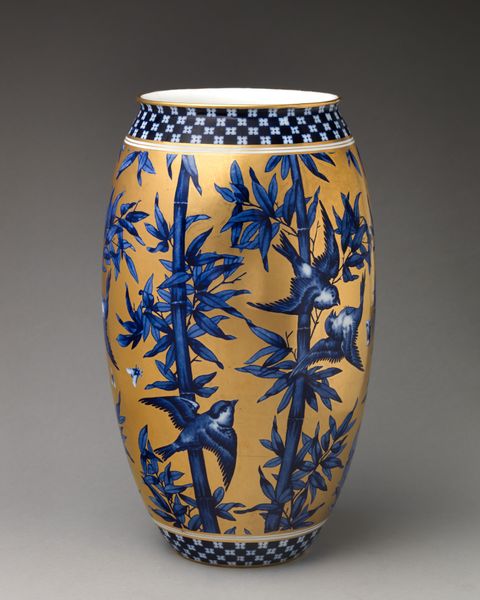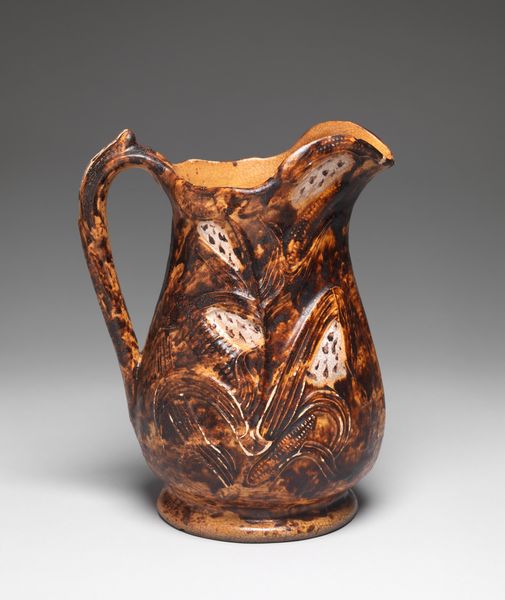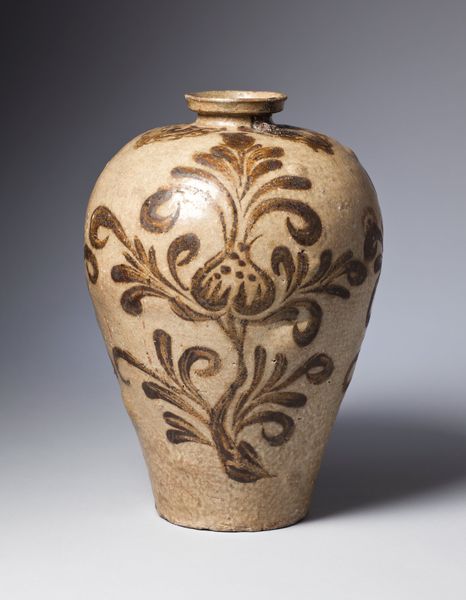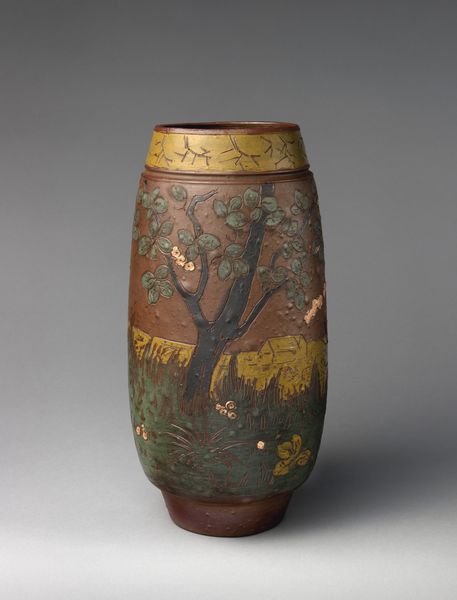
ceramic, sculpture
#
art-nouveau
#
ceramic
#
flower
#
stoneware
#
sculpture
#
decorative-art
Dimensions: confirmed: 11 5/16 × 7 1/4 × 4 3/8 in. (28.7 × 18.4 × 11.1 cm)
Copyright: Public Domain
Editor: This gorgeous ceramic vase by Emile Galle, made between 1880 and 1890, is so striking! The flowers and the color palette give it a delicate but somewhat melancholic mood. How do you interpret the symbolism within this piece, especially considering its historical context? Curator: It’s beautiful, isn't it? What strikes me immediately is how this vase exists at the intersection of art and industry, typical for Art Nouveau. Let’s consider the period, though. What sociopolitical factors do you think may have inspired Galle to create works that highlighted organic, floral motifs? Think about class divisions at the time and its correlation to art. Editor: I see your point. Perhaps the emphasis on nature was a way to reclaim beauty and craftsmanship in an increasingly industrialized world, especially as a visual statement in contrast to urban conditions for marginalized communities. Curator: Exactly! And consider that floral designs, like the ones we see on the vase, often acted as symbols of femininity and even the subjugation of women during that era. Editor: So, Galle might be making a statement about societal constraints imposed on women, using the flowers as a visual metaphor? Curator: It's a potential reading! How else could we relate the composition and the way Galle executed this design, from his aesthetic choices to broader social power structures at the time? Editor: This changes everything for me! I saw the vase as simply beautiful before. Now, understanding the social commentary makes it even more captivating and poignant. Curator: Exactly. Art doesn’t exist in a vacuum; by exploring historical context, we deepen our understanding. Hopefully, that's something listeners take away, too!
Comments
No comments
Be the first to comment and join the conversation on the ultimate creative platform.
